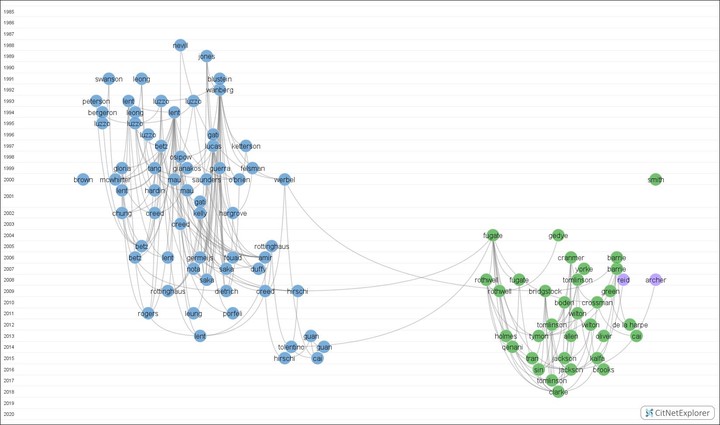Bridging the gap between graduate employability and career development
 Citation networks of key careers and employability publications.
Citation networks of key careers and employability publications.A significant focus of my PhD is addressing the gap between the scholarly disciplines and professional practice of graduate employability and career development. Although you would think that they are closely related, as both are fundamentally concerned with students’ career success, they are in fact very different things. I have two specific studies underway that will explore this gap and recommend that we professionals in higher education careers and employability make some effort to close it.
The gap in research
In the research literature, there is very little exchange between higher education research focused on graduate employability and career development. There are a couple of boundary-spanning researchers, but as you can see in the visualisation of citation networks, connections between the field are rare.
To explore the gap in shcolarly literature, I have conducted a citation network analysis of more than 4000 publications from the two fields of research. I am writing an article in which I demonstrate the gap, using visualisations such as the one on this page, and then identify key theories and themes in the career development field that could be of particular value to higher education employability researchers and educators. This article is well underway and I hope to have it published published in 2020. In this article
The gap in practice
In professional practice, there is a similar gap between university career development practitioners and those who occupy a range of roles that come under the employability remit. Career development practice in higher education is very strongly bounded. Career development practitioners have career development qualifications, experience, and professional standards, work in dedicated services, and are informed by career development theories. Employability, on the other hand, is a label applied to a diverse range of roles and operational areas: student development and engagement, alumni and industry engagement, event management, student services, work-integrated learning, sports and culture, and libraries and academic support, among others. When it comes to employability, there is no shared understanding of what it is and how it is done, no formal qualifications or professional accreditation, and very little cohesion in terms of professional identity.
I have explored the gap in professional practice by analysing 400 job advertisements for roles in Australian higher education focused on careers or employability, between 2013 and 2019. I have coded the advertisements according to their specialty area, location in the university, required qualifications, contract terms, and renumeration. The findings show a clear distinction between the bounded career development profession and the unbounded collection of employability roles. My doctoral colleague Jason Brown, from La Trobe University, will write an article based on this data. In some ways it is a follow up to our previous collaboration, with Tessa McCredie and Peter McIlveen, Career services in Australian higher education: Aligning the training of practitioners to contemporary practice, published in the International Journal of Higher Education Policy and Management.